Hi Grace. First of all, we would like to get to know you. Can you tell us a little about yourself?
I’m a Nigerian-Russian painter from Tver, Russia. I grew up in California and moved to New York seven years ago to study Art History at Columbia University. I now live and work in Brooklyn. My paintings work through the themes of social alienation, mass digitization, and globalization— though I ironically owe my very existence to the latter of the three. When I’m not painting, I’m managing a gallery in Chelsea, NYC.
When and how did you start painting?
I’ve drawn my whole life, but I only began painting when I was 17: I took an IB art class in high school thinking I would be taught how to paint, but instead I was thrown into a series of projects I had to figure out on my own. I began oil painting about five years ago, and it’s remained my medium of choice since. I’m an art historian and for me, when I paint in oil, it’s a way of directly stepping into a centuries-old tradition— the history of Western art has been, in large part, a history of oil painting. I’m not sure what medium will dominate our next few centuries. Probably something digital. But anyways— that’s how I started painting, and it’s why I continue!
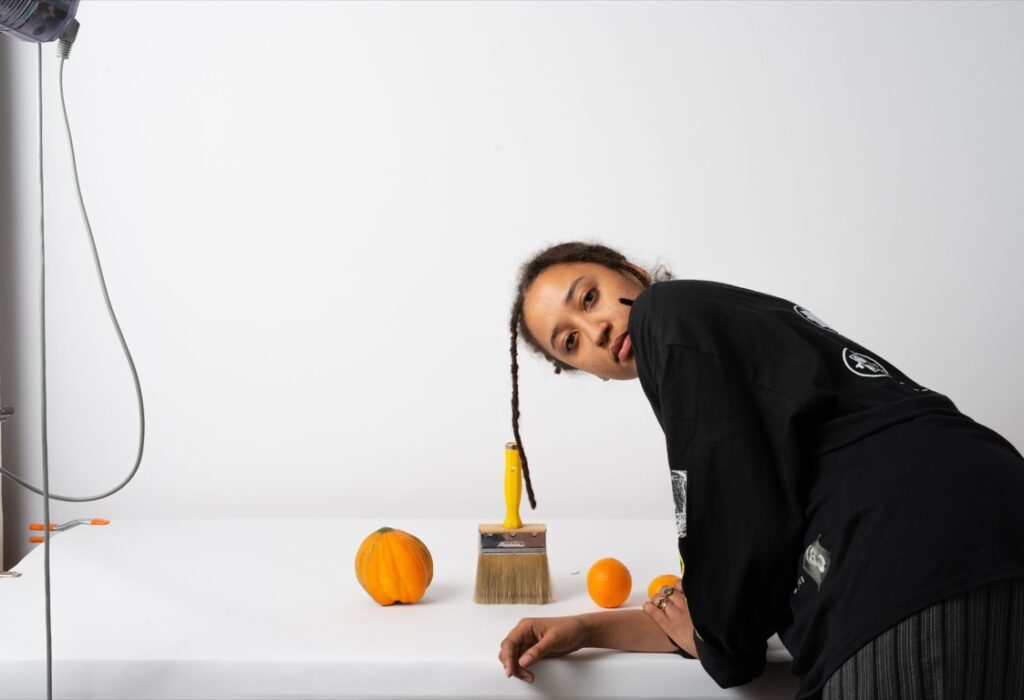
What do you tell in your pictures?
I paint about issues like repatriation of works of art and craft. I paint about how different bodies are perceived. I paint about people’s assumptions and preconceptions. I paint about the plain beauty of objects. And sometimes I paint about pop culture.
But rather than make direct commentary, I want people who look at my work to put together associations of their own when looking at the images I make. The “meaning” a given work of art has for me ultimately has nothing to do with what a viewer will think about it. The themes I like to play with are hysteria, dreams, specters, humor, ancient artifacts, history versus modernity, and the tyranny of our digital reality— how it’s changed the very way we look at the world around us.
Which art movements were you influenced by when you started painting?
I’m a total Surrealist. I adore color and composition and like to pull together disparate images through free association. Karl Jung’s writing on psychoanalysis and dreamwork have been very influential, as has more recent writing by Edward Said, Hito Styerl, Ta’Neshi Coates, and Jean Baudrillard regarding (respectively), orientalism, digital images, racial inequality, and “simulation.”
A recurring theme in my paintings is the computer screen and digital interface, the way it affects our view of the world and “visual landscape.” But it was actually Cubism that led me to that realization!, that led me to think of the internet as “a place where all images seem to exist at once” and about how strange digital screens actually look.
My work also makes reference to post-war figurative painting, just because I like it.
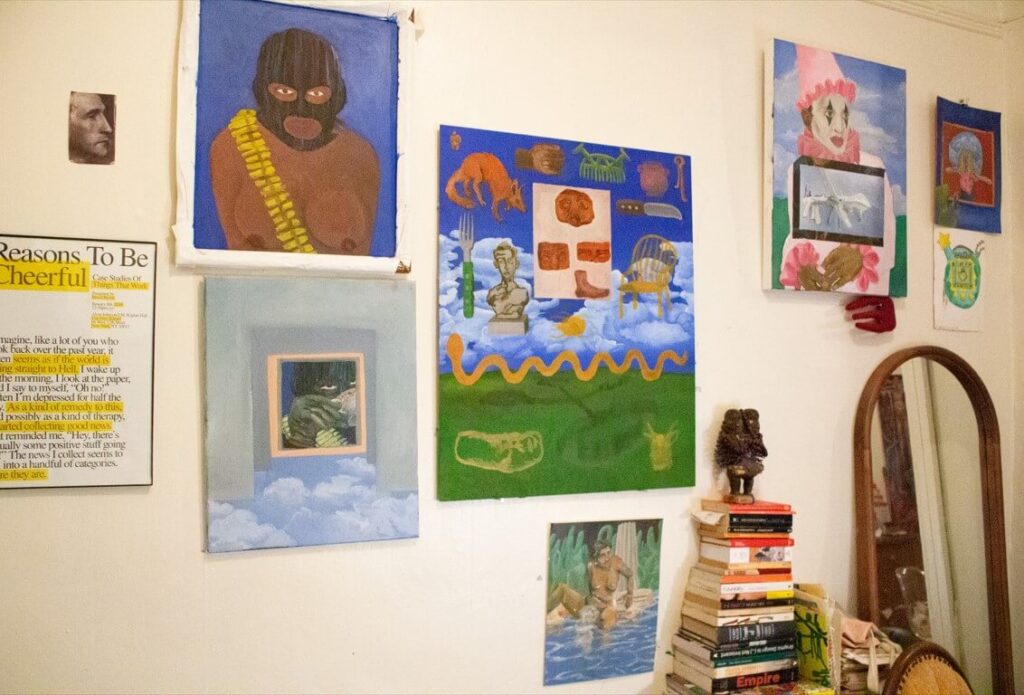
Which art movement or movements do you feel close to right now?
In terms of contemporary movements, I’d definitely call myself a post-digital painter. Not because I paint in a way that looks digital, but because my treatment of the painting’s components in the overall composition is based on how images appear on screens and within the digital world.
What are you inspired by when painting?
I look back on Nigerian and Russian culture a lot, as well as ancient artifacts. I have a collection of African masks, furniture, and figures at home. They give me ideas and keep me company. I’m also very interested in the various art movements within the USSR, from Constructivism and the early Soviet Avant-Garde to Socialist Realism. My great-grandfather was actually a small-time socialist realist painter and graphic designer— it’s hilarious to think that I inherited his knack for paint and Letraset’s! I often wonder how he’d feel about Adobe programs.
I’m also always collecting images— I have a big library at home. I save a lot of images online. And I take a lot of pictures with my phone as well, though I don’t use those as references so much as I focus on how things are arranged. Oftentimes a painting starts with me finding one image I like, painting it, and then staring at the painting for a few days wondering what other images it would fit well with. Recently I painted an image of a rug on a clothesline out in the countryside somewhere and it took me a week to decide what to pair it with. I decided it would look nice with a clown, so I added in a self-portrait as Pierrot.
Beyond all of that, I’m very much inspired by how I’m feeling at a given moment. For instance, in 2020 I began painting images of a Black woman dressed up as a stereotypical “terrorist” after I became frustrated with people’s fear of Black people’s justified anger over American racial injustice. I became, at the same time, fixated on masks. The KN95 got me thinking about Venetian carnival masks and Balaclavas! More recently, I painted a couple sentimental pieces about the war between Ukraine and Russia— but a viewer would have to have a keen eye to spot the references. I’ve been leaning toward subtlety. I don’t feel the need to treat my paintings like therapy sessions.
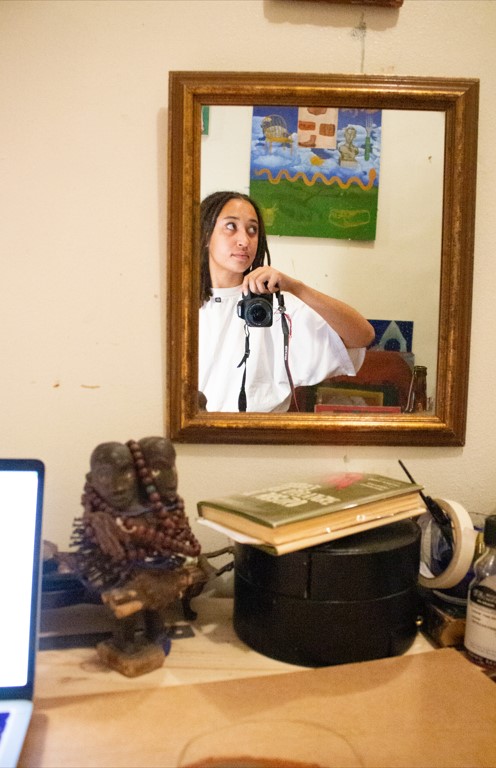
What do you do besides painting?
I’m the manager of Jason Jacques Gallery in Chelsea, NYC. In terms of hobbies, I bicycle and cook a lot. I have a big collection of loose-leaf tea at home, which is a real joy. And sometimes, I just go to the park to look at the clouds.
Do you have any projects that you plan to realize?
I’d like to independently curate an exhibition next year— but I can’t give details yet!
https://www.instagram.com/grcnkm/

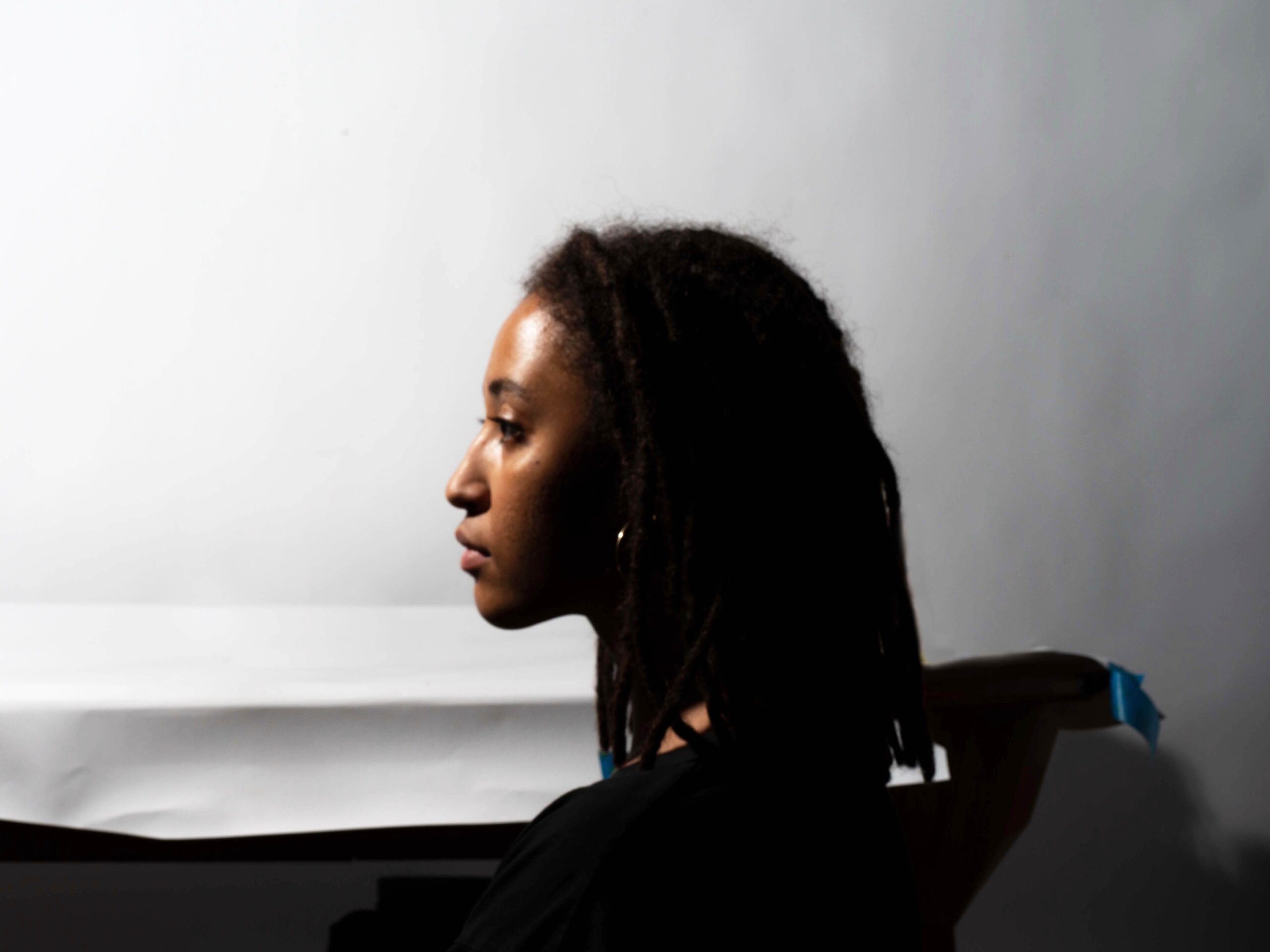




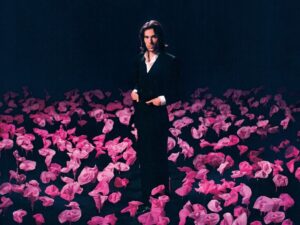

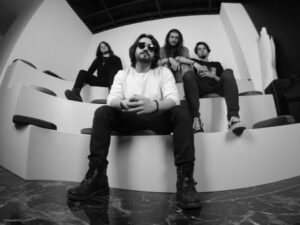

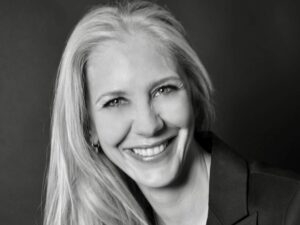
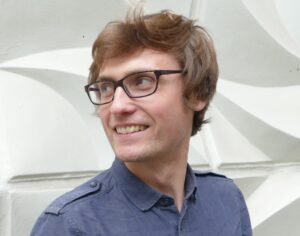

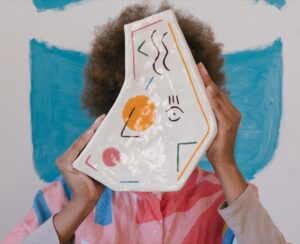
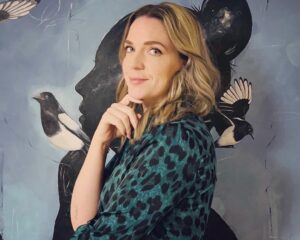
Be First to Comment